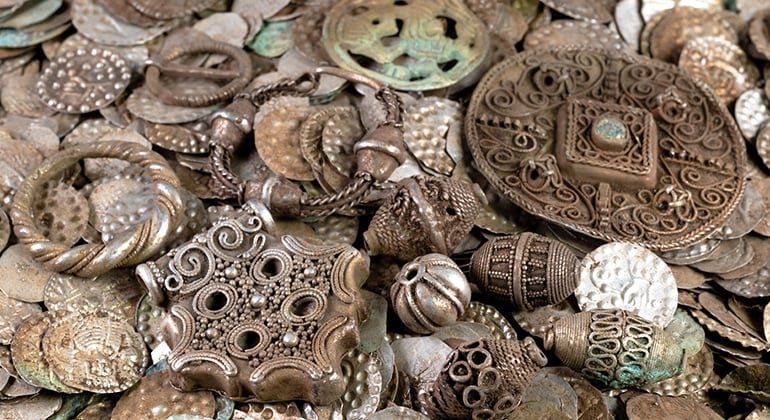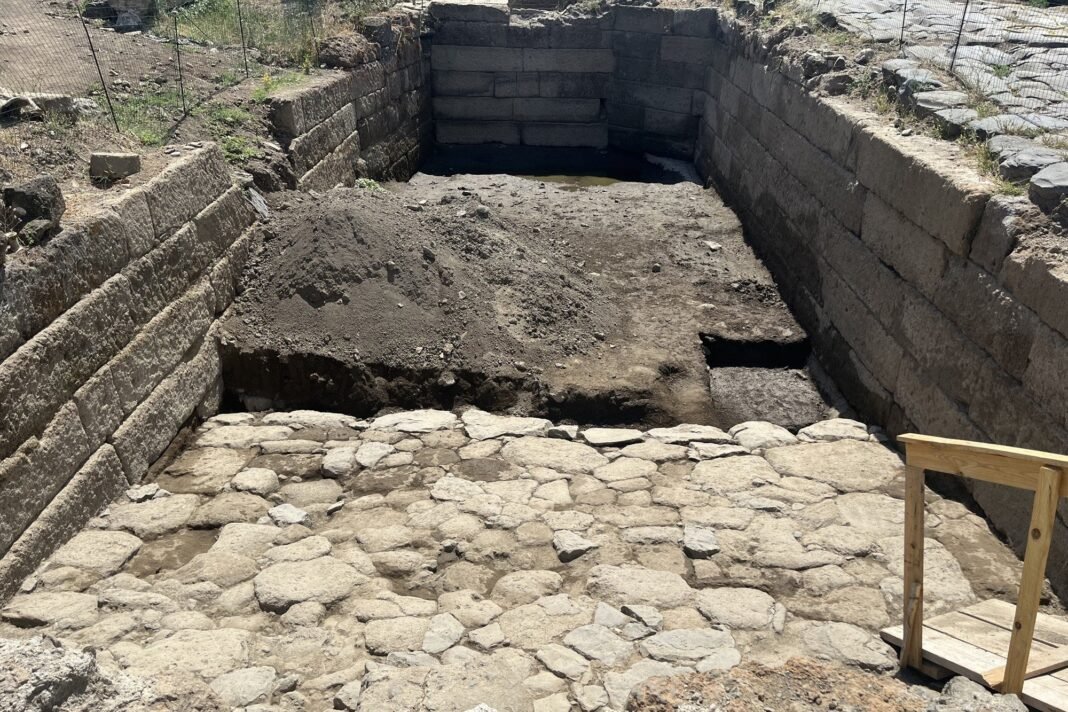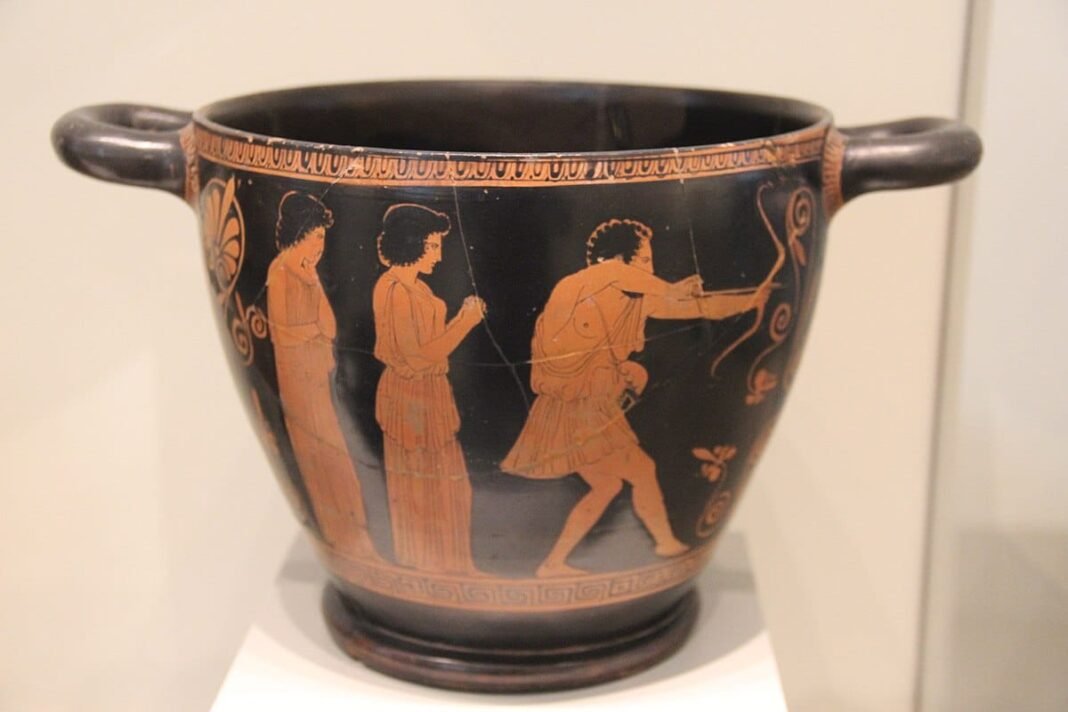
A man digging for worms at his summer house outside Stockholm has uncovered what could be one of Sweden’s largest medieval silver coin hoards, a copper cauldron containing as many as 20,000 silver coins along with beads, rings, and pendants.
The find, reported to the Stockholm County Administrative Board by the man who discovered it, dates to the early Middle Ages and weighs about 13 pounds (6 kilograms), the board said in a statement. Archaeologists have begun examining the contents, which had been placed in a largely degraded copper vessel, and will report the discovery to the National Heritage Board.
“This is probably one of the largest silver treasures from the early Middle Ages that has been found in Sweden,” Sofia Andersson, an antiquarian at the County Administrative Board, said in the statement. She cautioned that the precise number of coins has not yet been established.
Most of the silver coins date back to 12th-century
Preliminary study indicates most of the coins date to the 12th century. Some bear the inscription “KANUTUS,” the Latin form of Knut, identifying them as minted during the reign of King Knut Eriksson (about 1173–1195). The hoard also includes coins struck on Gotland, a major Baltic trading hub in the medieval era, and a number of rare “bishop coins” that depict a bishop holding a crosier.
“It is completely unique; we have no other medieval treasures from Stockholm,” Lin Annerbäck, director of the Medieval Museum in Stockholm, told the Swedish daily Dagens Nyheter. “And then it seems to be extremely large too. So it is very exciting.”
🚨Massive Medieval Silver Hoard of Up To 20,000 Coins and Jewelry Unearthed Near Stockholm
📸: Stockholm County Administrative Board#archaeology #medieval #MiddleAges #Sweden pic.twitter.com/xcKhbOQA4D
— Madam Archaeologist (@madamarchaeo) October 12, 2025
Stockholm was not founded until 1252, and researchers say the discovery gives an unusually detailed glimpse of wealth and trade in the region before the city existed. The mix of personal jewelry and such a large coin hoard suggests the deposit may have belonged to a wealthy merchant, minor noble, or church official who hid the wealth during a period of instability and never returned, officials said.
Location kept secret
Archaeologists said coins and silver objects show signs of oxidation, and that the cauldron’s copper has largely deteriorated. The exact findspot has been kept secret to guard against looting, and researchers warned there could be additional material or structures nearby.
Under Swedish law, people who find ancient objects must report them, and the state may choose to acquire them with compensation. “The finder acted completely correctly in contacting us at the County Administrative Board,” Andersson said, noting the Cultural Environment Act gives the state the option to redeem such finds for payment.

The National Heritage Board will decide whether the state will claim the hoard and determine any compensation. Researchers will continue cataloging and analyzing the coins and objects to learn more about their origins and what they reveal about trade and society in 12th-century Scandinavia.


